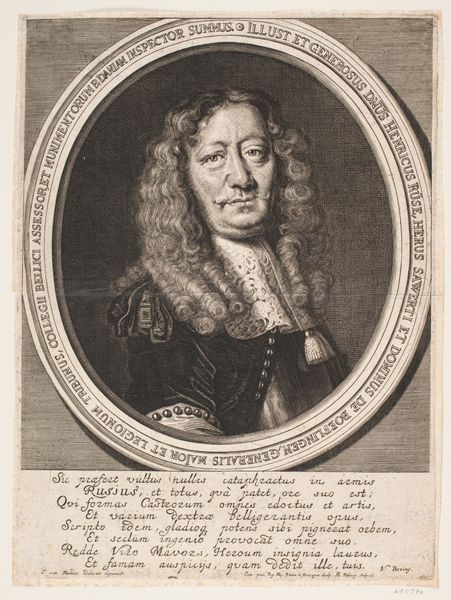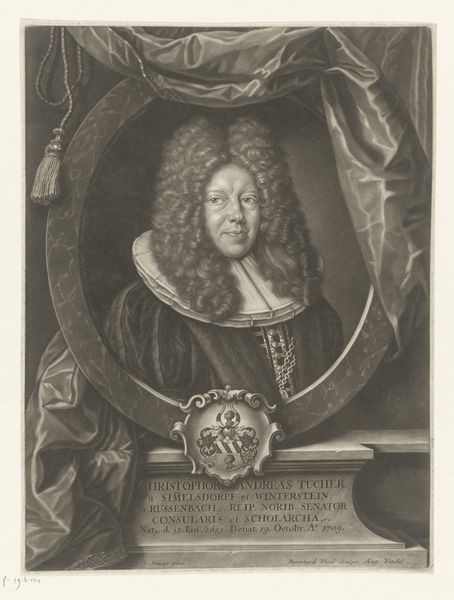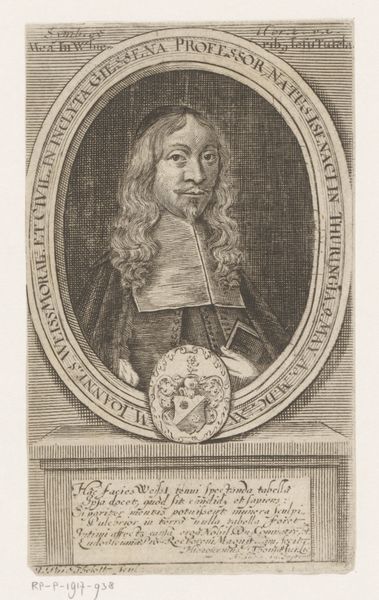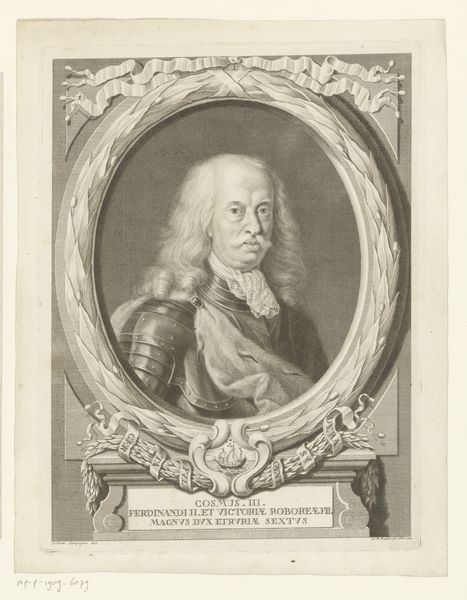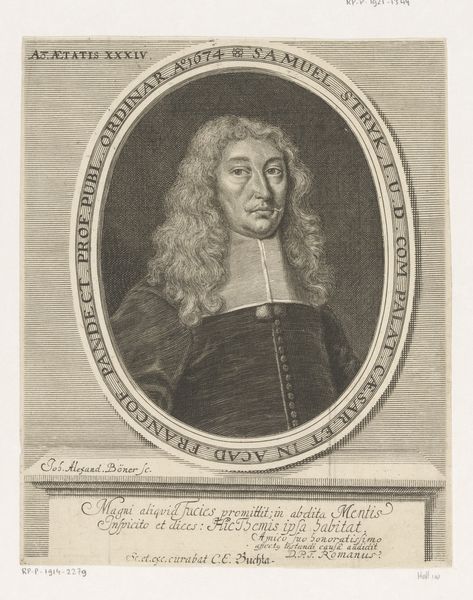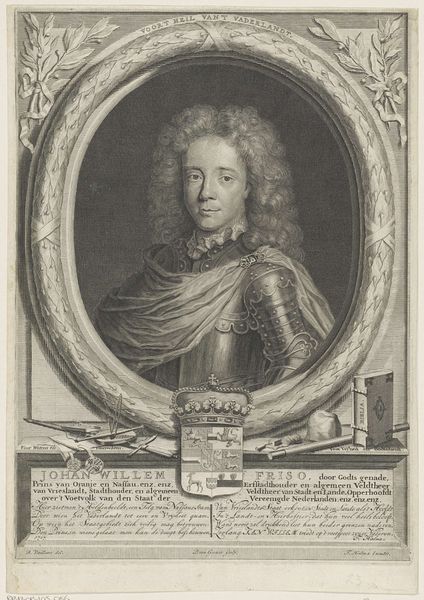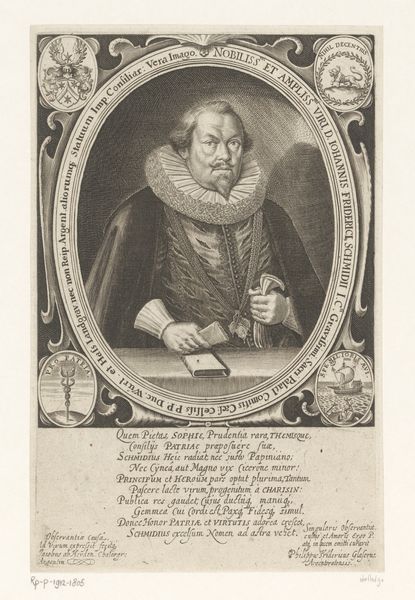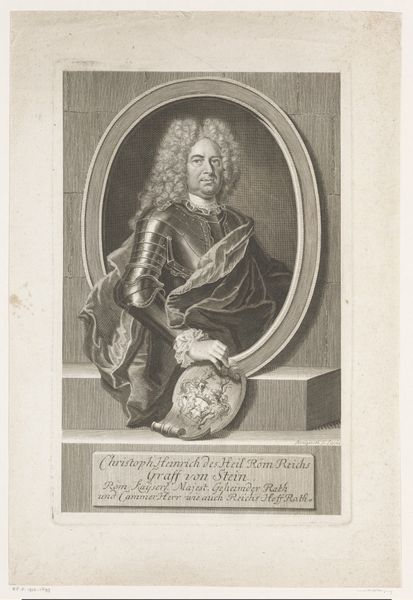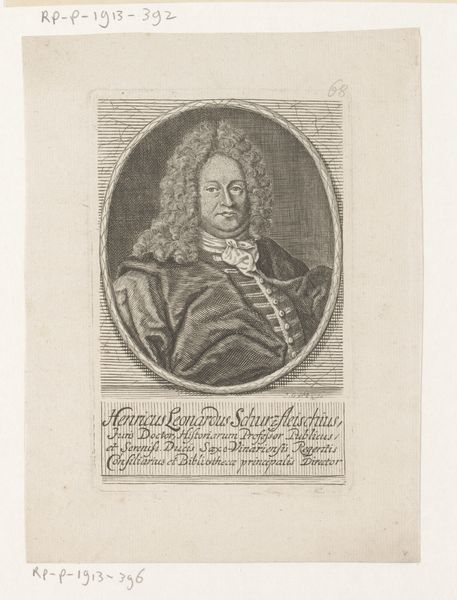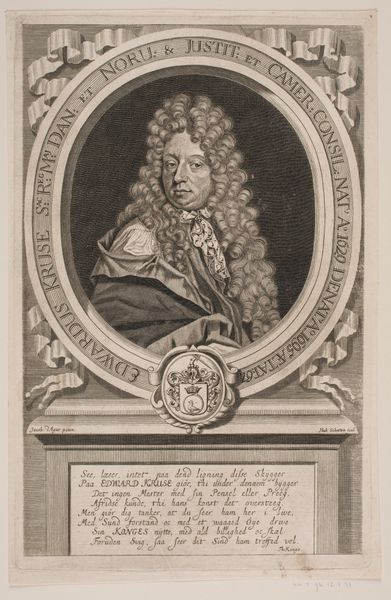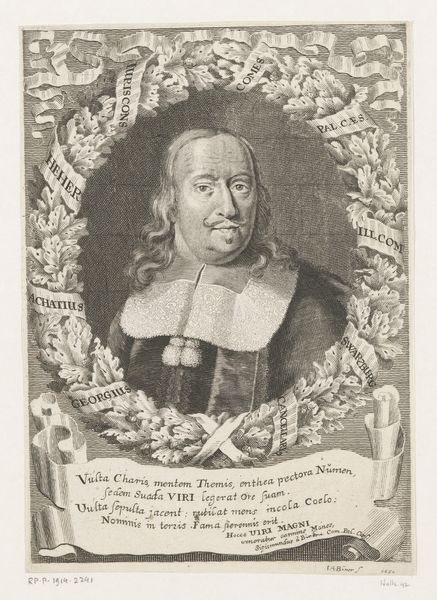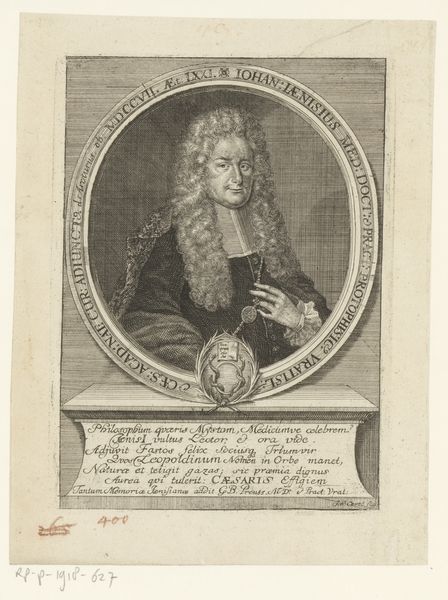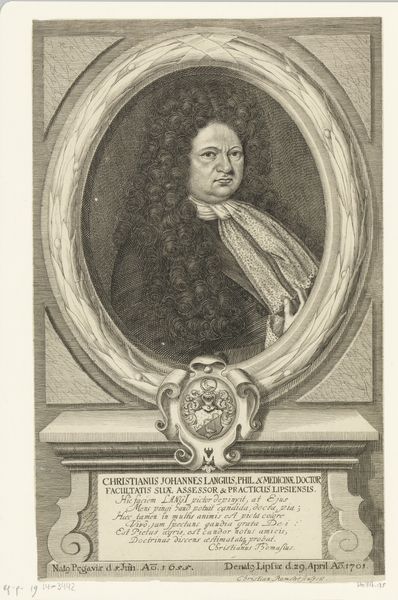
engraving
#
portrait
#
baroque
#
old engraving style
#
caricature
#
portrait reference
#
line
#
history-painting
#
engraving
Dimensions: height 190 mm, width 147 mm
Copyright: Rijks Museum: Open Domain
Editor: This engraving, "Portret van Johann Christoph Herold," dating from 1665 to 1721 and by Christian Romstet, has this very formal, almost stern feel to it, wouldn't you agree? I’m struck by the intricate details achieved through the line work. What stands out to you in this portrait? Curator: What's immediately apparent is how this portrait embodies the function of art within the Baroque period. The piece exists as a socio-political artifact that helps construct identity and project status. Look at the inclusion of the family crest and Latin text. How might those elements contribute to shaping the viewer's understanding of Herold and his place in society? Editor: Well, I guess they would show him as someone of importance, established and educated. A symbol of status, almost like propaganda? Curator: Precisely. The engraving technique, with its precise lines, allowed for wide dissemination, so these portraits became tools in solidifying power structures and reinforcing social hierarchies. The portrait is as much about constructing an image as it is about representing an individual. Considering this, does it shift your initial perception of its "stern" mood? Editor: It does actually! It’s less about Herold himself and more about the message he wanted to send, the persona he was building. I initially focused on the aesthetic of the engraving but understanding its historical role really changes how I see it. Curator: And in understanding the context in which it was created and viewed, we can better grasp the multi-layered purposes of the image itself. It encourages one to really consider how the public perception and role of art shape our view. Editor: Absolutely. Now I’m wondering about all the subtle power plays in portraiture from that era!
Comments
No comments
Be the first to comment and join the conversation on the ultimate creative platform.
